The Confessions of a Caricaturist, Vol. 1, Harry Furniss [digital book reader txt] 📗
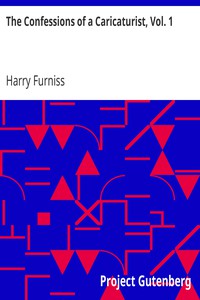
- Author: Harry Furniss
Book online «The Confessions of a Caricaturist, Vol. 1, Harry Furniss [digital book reader txt] 📗». Author Harry Furniss
When I, a little, a very little boy in knickerbockers, first enjoyed the adventures of Alice and worshipped the pen and the pencil which recorded them, I little thought I would some day work hand in hand with the author, and when that day did arrive I regretted that I had not been born twenty-two years before I had, for for me to follow Tenniel was quite as difficult and unsatisfactory a task as for Carroll to follow Carroll. The worst of it was that I was conscious of this, and Lewis Carroll was not. Fortunately for me Sylvie was not like her prototype Alice; the illustrations for Sylvie would not have suited Tenniel as Alice did. I therefore did not fear comparison, but what I did fear was that Carroll would not be Carroll, and Carroll wasn't—he was Dodgson. I wish I had illustrated him when he was Carroll; that he was not the Carroll of "Alice" is plainly indicated in his life in the following passage:[1] "The publication of 'Sylvie and Bruno' marks an epoch in its author's life, for it was the publication of all the ideals and sentiments which he held most dear. It was a book with a definite purpose; it would be more true to say with several definite purposes. For this very reason it is not an artistic triumph as the two 'Alice' books undoubtedly are; it is on a lower literary level, there is no unity in the story. But from a higher standpoint, that of the Christian and the philanthropist, the book is the best thing he ever wrote. It is a noble effort to uphold the right, or what he thought to be the right, without fear of contempt or unpopularity. The influence which his earlier books had given him he was determined to use in asserting neglected truths.
[1] "The Life and Letters of Lewis Carroll," by Stuart Dodgson Collingwood (Fisher Unwin).
"Of course the story has other features—delightful nonsense not surpassed by anything in 'Wonderland,' childish prattle with all the charm of reality about it, and pictures which may fairly be said to rival those of Sir John Tenniel. Had these been all, the book would have been a great success. As things are, there are probably hundreds of readers who have been scared by [Pg 103] the religious arguments and political discussions which make up a large part of it, and who have never discovered that Sylvie is just as entrancing a personage as Alice when you get to know her."
 INSTRUCTIONS IN A LETTER FROM LEWIS CARROLL.
INSTRUCTIONS IN A LETTER FROM LEWIS CARROLL.
The character of the book was a bitter disappointment to me. I did not want to illustrate a book of his with any "purpose" other than the purpose of delightful amusement, as "Alice" was. Tenniel had point-blank refused to illustrate another story for Carroll—he was, Tenniel told me, "impossible"—and Carroll evidently was not satisfied with other artists he had tried, as he wrote me: "I have a considerable mass of chaotic materials for a story, but have never had the heart to go to work to construct the story as a whole, owing to its seeming so hopeless that I should ever find a suitable artist. Now that you are found," etc. That was in 1885, and we worked together for seven years. Tenniel and other artists declared I would not work with Carroll for seven weeks! I accepted the challenge, but I, for that purpose, adopted quite a new method. No artist [Pg 104] is more matter-of-fact or businesslike than myself: to Carroll I was not Hy. F., but someone else, as he was someone else. I was wilful and erratic, bordering on insanity. We therefore got on splendidly.
Of course it was most interesting to me to study such a genius at such a time, and in recording my experiences and impressions of Lewis Carroll my object is not so much to deal with the actual illustration to those ill-conceived books "Sylvie and Bruno," but to deal with my impressions of the man obtained by working with him for so long, for to have known the man was even as great a treat as to read his books. Lewis Carroll was as unlike any other man as his books were unlike any other author's books. It was a relief to meet the pure simple, innocent dreamer of children, after the selfish commercial mind of most authors. Carroll was a wit, a gentleman, a bore and an egotist—and, like Hans Andersen, a spoilt child. It is recorded of Andersen that he actually shed tears, even in late life, should the cake at tea be handed to anyone before he chose the largest slice. Carroll was not selfish, but a liberal-minded, liberal-handed philanthropist, but his egotism was all but second childhood.
He informed my wife that she was the most privileged woman in the world, for she knew the man who knew his (Lewis Carroll's) ideas—that ought to content her. She must not see a picture or read a line of the MS.; it was sufficient for her to gaze at me outside of my studio with admiration and respect, as the only man besides Lewis Carroll himself with a knowledge of Lewis Carroll's forthcoming work. Furthermore he sent me an elaborate document to sign committing myself to secrecy. This I indignantly declined to sign. "My word was as good as my bond," I said, and, striking an attitude, I hinted that I would "strike," inasmuch as I would not work for years isolated from my wife and friends. I was therefore no doubt looked upon by him as a lunatic. That was what I wanted. I was allowed to show my wife the drawings, and he wrote: "For my own part I have shown none of the MS. to anybody; and, though I have let some special friends see the pictures, I have [Pg 105] uniformly declined to explain them. 'May I ask so-and-so?' they enquire. 'Certainly!' I reply; "you may ask as many questions as you like!' That is all they get out of me."
But his egotism carried him still further. He was determined no one should read his MS. but he and I; so in the dead of night (he sometimes wrote up to 4 a.m.) he cut his MS. into horizontal strips of four or five lines, then placed the whole of it in a sack and shook it up; taking out piece by piece, he pasted the strips down as they happened to come. The result, in such an MS., dealing with nonsense on one page and theology on another, was audacious in the extreme, if not absolutely profane—for example:
"And I found myself repeating, as I left the Church, the words of Jacob, when he 'awaked out of his sleep,' surely the Lord is in this.
"And once more those shrill discordant tones rang out:—
Descending from a bus;
He looked again, and found it was—
A Hippopotamus.'"
These incongruous strips were elaborately and mysteriously marked with numbers and letters and various hieroglyphics, to decipher which would really have turned my assumed eccentricity into positive madness. I therefore sent the whole MS. back to him, and again threatened to strike! This had the desired effect. I then received MS. I could read, although frequently puzzled by its being mixed up with Euclid and problems in abstruse mathematics.
I soon discovered that I had undertaken a far more difficult task than I anticipated, for in the first letter of instructions I received from the author he frankly acknowledged I had my work "cut out." "Cut out" suggests dressmaking, the very subject first chosen for discussion and correspondence.
The extraordinary workings of this unique mind are shown by quotations from his letters to me:
"I think I had better explain part of the plot, as to these two—Sylvie and Bruno. They are not fairies right through the book—but children. All these conditions make their dress rather a puzzle. They mustn't have [Pg 106] wings; that is clear. And it must be quite the common dress of London life. It should be as fanciful as possible, so as just to be presentable in Society. The friends might be able to say 'What oddly-dressed children!' but they oughtn't to say 'They are not human!'
"Now I think you'll say you have 'got your work cut out for you,' to invent a suitable dress!"
 SPECIMEN OF LEWIS CARROLL'S DRAWING AND WRITING.
SPECIMEN OF LEWIS CARROLL'S DRAWING AND WRITING.
How I wish I had had those dresses cut out for me! The above instructions were quickly followed by other suggestions which added to my already scanty idea of a costume suitable to Kensington Gardens and to fairyland! I was thinking this difficulty would be lessened if the story took place in winter, when I received another letter, which I must frankly confess rather alarmed me:
"As to the dresses of these children in their fairy state (we shall sometimes have them mixing in Society, and supposed to be real children; and for that they must, I suppose, be dressed as in ordinary life, but eccentrically, so as to make a little distinction). I wish I dared dispense with all costume; naked children are so perfectly pure and lovely, but Mrs. Grundy would be furious—it would never do. Then the question is, how little dress will content her? Bare legs and feet we must have, at any rate. I so entirely detest that monstrous fashion high heels (and in fact have planned an attack on it in this very book), that I cannot possibly allow my sweet little heroine to be victimised by it."
[Pg 107]
Another monstrous fashion he condemns refers to a picture of his grown-up heroine in London Society:
"Could you cut off those high shoulders from her sleeves? Why should we pay any deference to a hideous fashion that will be extinct a year hence? Next to the unapproachable ugliness of 'crinoline,' I think these high-shouldered sleeves are the worst things invented for ladies in our time. Imagine how horrified they would be if one of their daughters were really shaped like that!"
 ORIGINAL SKETCH BY LEWIS CARROLL OF HIS CHARMING HERO AND HEROINE.
ORIGINAL SKETCH BY LEWIS CARROLL OF HIS CHARMING HERO AND HEROINE.
I did make a note of a horrified mother with a nineteenth century malformation, but I did not send it to the author, as it struck me, when re-reading his letter, he was possibly serious. Still we had Sylvie's dress, Mrs. Grundy, crinolines, and high heels to discuss:
"As to your Sylvie I am charmed with your idea of dressing her in white; it exactly fits my own idea of her; I want her to be a sort of embodiment of Purity. So I think that, in Society, she should be wholly in white—white frock ('clinging' certainly; I hate crinoline fashion): also I think we might venture on making her fairy dress transparent. Don't you think we might face Mrs. Grundy to that extent? In fact I think Mrs. G. would be fairly content at finding her dressed, and would not mind whether the material was silk, or muslin, or even gauze. One thing more. Please don't give Sylvie high heels! They are an abomination to me."
Then for months we corresponded about the face of the Heroine alone. My difficulty was increased by the fact that the fairy child Sylvie and the Society grown-up Lady Muriel were one and the same person! So I received reams of written descriptions and piles of useless photographs intended to inspire me to draw with a few lines a face embodying his ideal in a [Pg 108] space not larger than a threepenny-piece. By one post I would receive a batch of photographs of some young lady Lewis Carroll fancied had one feature, or half a feature, of that ideal he had conjured up in his own mind as his heroine.
He invited me to visit friends of his, and strangers too, from John o' Groats to Land's End, so as to collect fragments of faces. A propos of this I wrote in an artists' magazine a brief account of artists' difficulties with the too exacting author. (It is quite safe to write anything about Judges
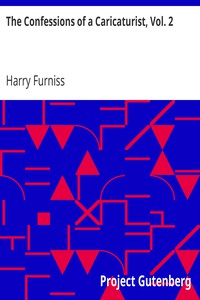

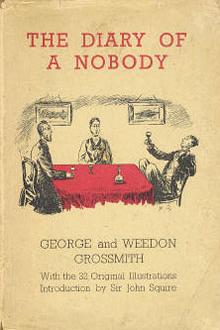
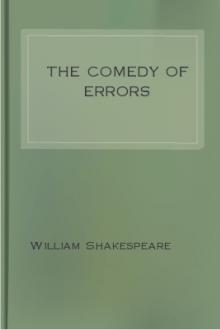
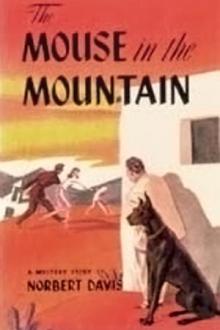
Comments (0)